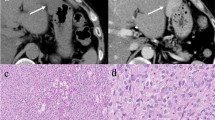Summary
Colonoscopy is a superior diagnostic tool for the detection of cancer of the colon. Its limitations include that it is not always available and there is a great deal of discomfort for the patient. It should therefore be used as effectively as possible. The goal of this retrolective cohort study was to analyze the usefulness of colonoscopy, especially by relating it to the subsequent therapeutic impact. Indication-related groups included “rectal bleeding,” “other symptoms suggestive of malignancy,” and “follow-up.” In 714 patients selected as a result of admission to the proctological unit of our surgical clinic, a carcinoma was discovered in 9% and an adenoma in 13.4%. Patients with rectal bleeding were found to benefit most from colonoscopy since active therapeutic management followed in 56% of the cases. On comparison, there was a direct therapeutic impact in only 10% of the colonoscopies performed for follow-up. Identification of additional factors such as mucosal proliferation markers may help to improve the efficiency of endoscopy by more specifically designating the populations at risk for colonic neoplasia.
Similar content being viewed by others
References
Aberg T, Ling L, Reland U, Norlund A (1985) Does flexible sigmoidoscopy have any justification as compared with complete colonoscopy. An analysis of cost-effectiveness and medical risks. Endoscopy 18: 133–136
Bat L, Piness A, Rabav M, Niv Y, Shemesh E (1985) Colonoscopic findings in patients with hemorrhoids, rectal bleeding and normal rectoscopy. Ir J Med Sci 21: 139–141
Brady HR, O'Donoghue DP (1983) Colorectal polyps — an Irish experience. Ir J Med Sci 152: 377–381
Eddy DM (1984) Computer models for surveillance of gastrointestinal disorders. In: Rosen P, Dombal FT de (eds) Frontiers of gastrointestinal research: computer aid in gastroenterology. Karger, Basel, pp 134–146
Eisold H (1983) Diagnostik von Kolonpolypen und Karzinomen. ZFA 59: 1857–1860
Feinstein AR (1976) Clinical biostatistics. Clin Pharmacol Ther 20: 617–631
Frühmorgen P, Matek W (1981) Ten years of colonoscopy. Endoscopy 13: 162–168
Gresser A, Daiber D, Guggemos H (1981) Zum Stellenwert der Koloskopie in einer chirurgischen Klinik. Fortschr Med 99: 912–916
Hermanek P (1982) Evolution and pathology of rectal cancer. World J Surg 6: 502–509
Kronborg E, Haye E, Deichgräber E (1981) A prospective, partly randomized study of the effectiveness of repeated examination of the colon after polypectomy and radical surgery for cancer. Scand J Gastroenterol 16: 879–884
Kusche J, Menningen R, Izbicki JR (1985) Diamine oxidase, the regulator of intestinal mucosa proliferation? In: Selmeci L, Brosnan ME, Seiler N (eds) Recent progress in polyamine research. Académiai Kiadò, Budapest/VNU, Utrecht, pp 329–338
Kutson CO, Max MH (1980) Value of colonoscopy in patients with rectal blood loss unexplained by rigid proctosigmoidoscopy and barium contrast enema examination. Am J Surg 139: 84–87
Lipkin M (1984) The identification of high risk populations. Scand J Gastroenterol [Suppl 19] 104: 91–107
Luk GD, Hamilton SR, O'Ceallaigh D, Smith J, Natuzzi E (1983) Azoxymethane induces generalized biphasic increase in intestinal ornithine decarboxylase during colon carcinogenesis. Gastroenterology 82: 1121–1125
Pugliese V, Aste A, Bruzzi P, Saccamano S, Bonelli L, Sant L (1984) Outcome of follow-up programs in patients previously resected for colorectal cancer. Tumori 70: 203–208
Teague RH, Salomon PR, Read AE (1973) Fiberoptic examination of the colon: a review of 255 cases. Gut 14: 139–144
Tedesco FJ, Pickeuse CA, Griffin JW, Sivak MV, Sullivan BH (1981) Role of colonoscopy in patients with unexplained melena: analysis of 53 patients. Gastrointest Endosc 27: 221–223
Author information
Authors and Affiliations
Rights and permissions
About this article
Cite this article
Mennigen, R., Kusche, J., Barkun, J. et al. Usefulness and limitations of colonoscopy in a proctological clinic. Surg Endosc 2, 84–87 (1988). https://doi.org/10.1007/BF00704360
Issue Date:
DOI: https://doi.org/10.1007/BF00704360




